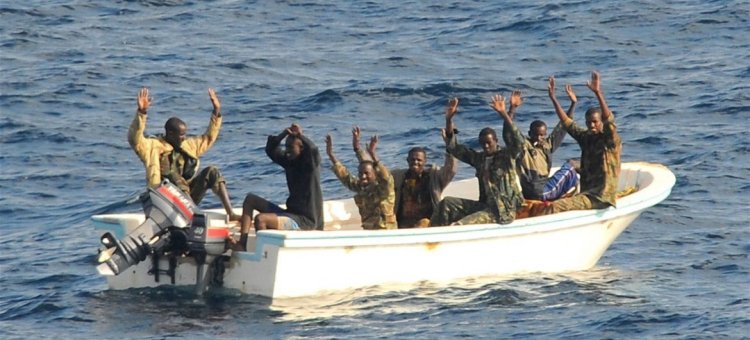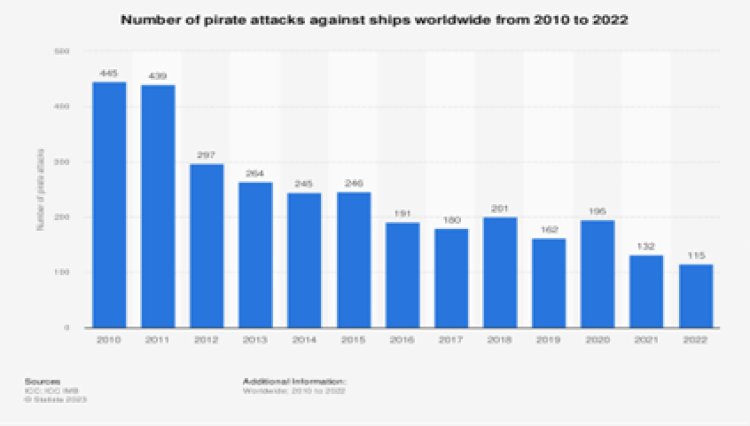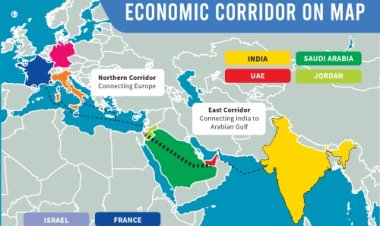Piracy in Somalia: Red Sea Showdown
Suspected Somali pirate attacks have increased since November 2023, causing concerns of a new piracy threat off the east coast of Africa. At least four ships have been hijacked off the Somalia coast, with fears of collaboration between Somali pirates and the Iranian-backed Yemeni Houthi group.

Explainer
By Anoushka Banerjee
Since December, Indian naval ships have been the first responders in at least 17 incidents where pirates hijacked vessels in the Red Sea. In the most recent incident, an Indian warship called INS Sumitra played a key role in rescuing two hijacked vessels off the coast of Somalia within 36 hours. The warship responded to a distress message from an Iranian-flagged vessel on January 28. Indian naval officers eventually convinced the pirates to safely release the 17 crew members along with the boat. Two days later, it intercepted another Iranian-flagged fishing vessel named Al Naeemi, rescuing 19 Pakistani crew members.
Suspected Somali pirate attacks have increased since November 2023, causing concerns of a new piracy threat off the east coast of Africa. At least four ships have been hijacked off the Somalia coast, with fears of collaboration between Somali pirates and the Iranian-backed Yemeni Houthi group.
The issue of Somali piracy, which affects the Gulf of Aden, the Arabian Sea, and the western portion of the Indian Ocean, is the most pressing transnational maritime security challenge in the Indo-Pacific region. Piracy on the high seas poses a severe threat to the safety and security of international trade and development.
Somalia, formally known as the ‘Federal Republic of Somalia’, is a country in the Horn of Africa with a long Indian Ocean coastline. The country has, for a long time, experienced political instability, resulting in a power vacuum and complete disorder across the territory. With no effective naval or law enforcement presence, local fishermen and armed groups turned to piracy as a source of money and power. Somali piracy, as known today, began in the early 2000s, when dissatisfied local fisherman, lured by the prospect of high ransoms, came together with militia and unemployed youth to hijack commercial ships.
Political upheaval and conflict have continued in Somalia since the early 1990s. The fall of the central government in 1991 caused a power vacuum, which resulted in chaos and lawlessness. Piracy thrived in Somalia especially due to its strategic location. Placed along vital maritime trade routes such as the Gulf of Aden and the Indian Ocean, there was more opportunity for pirates to target vessels. Many sources show that illegal and uncontrolled foreign fishing in Somali waters reduced local fish stock threatening Somali fishermen's livelihoods. This discontent, as well as the sense of foreign exploitation of local marine resources, drove some to participate in piracy as a form of opposition to these actions. Unemployment, economic desperation, and lack of prospects on land drove many Somalis to seek money through piracy, which offered large ransoms. The situation was exacerbated by the cycle of ‘successful’ ransoms. Further, the lack of strong government and law enforcement mechanisms allowed pirate organisations to operate with impunity and the lack of effective maritime security infrastructure and capabilities in Somalia made ships travelling through the region vulnerable.
In the late 2000s, the worldwide economic slump and soaring food costs made piracy a more appealing way to produce revenue. Because of easy availability to firearms and other weaponry in the region, which was frequently a result of hostilities in Somalia and adjacent countries, pirate organisations were able to operate more efficiently and brutally. With time, Somali piracy gradually transformed into a more sophisticated business.
Although poverty is the main explanation for Somalian piracy, the actual situation is complicated and influenced by several political, economic, and social variables. It emphasises how an internal issue has exterior effects and how tackling and preventing piracy off the coast of Somalia requires a knowledge of these root causes. To address this complicated, long-term challenge, the international community, regional parties, and the Somali government must collaborate in a united effort. Sustainable solutions must address not just the deterrent effects of piracy, but also the core issues that compel people and groups to engage in piracy in the first place. To improve security and maintain law and order in the country, the emphasis should be to develop local and regional government systems and the rule of law. Investments in economic development initiatives such as infrastructure, agriculture, and fisheries should be made to provide job opportunities. There have been calls for international assistance by the UNSC wherein agencies like ‘US Combined Joint Task Force-Horn of Africa’ (CJTF-HOA) along with counter-terrorism operation groups like ‘Operation Enduring Freedom-Horn of Africa’ (OEF-HOA) have jointly worked in trying to eradicate this problem. NATO deployed the ‘Standing NATO Maritime Group 2’ (SNMG2) for ‘Operation Allied Provider’ responsible for escorting merchant vessels and ships. The European Union also made a commendable effort in this area with "Operation Atlanta," which was primarily created to provide armed security forces on board "World Food Programme" ships delivering food to the Somali people as well as general protection from and dissuasion of pirates using naval escorts for convoys of civilian ships. The complex issue of "who should prosecute, convict, and rehabilitate" pirates has complicated counter-piracy operations and slowed down efforts to completely eradicate the issue. The difficulty for surveillance ships in keeping track of the numerous private ships at sea, which outnumber them by approximately two to one, is another drawback of counter-piracy efforts. Furthermore, there have been several false alarms, making such operations considerably more challenging. Private actors like mercenaries have also had a hindering role to play in this regard. Piracy business is heavily influenced by insurance business giving rise to a “political economy of insurance”.
Somalian piracy, although still stands a threat to the security of the Indo-Pacific, has now been significantly reduced. First, the nation has made strides towards assuming ownership of its own security, both on and offshore. The Somalia Maritime Directorate started updating its marine resource and security plan in August 2021. Since March 2017, there have been no reports of successful hijackings, and since 2013, both attempts and crimes have dramatically decreased. The UN Secretary-General referred to this in his report from 2021 on piracy and violent robbery at sea near Somalia.

However, it must be noted that although Somali piracy is on the decline, piracy as an activity usually “shifts” to other regions and does not completely disappear from existence. For Somalia's political and economic stability to be restored, a serious political solution must be reached. Somalia will remain a failing state without law, order, or hope until these essential goals are met. It will continue to be a sanctuary for vicious brigands and marine criminals. The eradication of piracy offshore Somalia will be heavily dependent on how successfully the international community and the Somali population manage and reverse domestic displacements in the country.
Disclaimer: This paper is the author's individual scholastic contribution and does not necessarily reflect the organization's viewpoint.
























